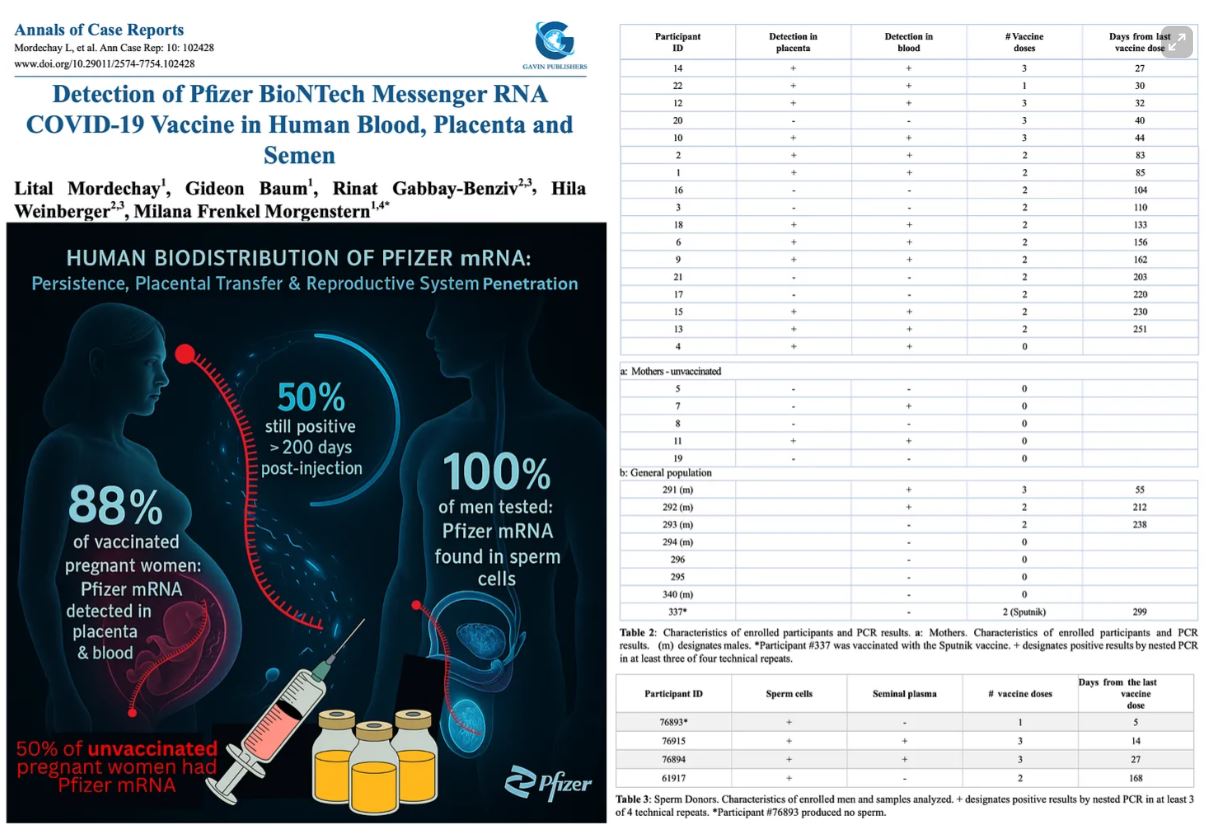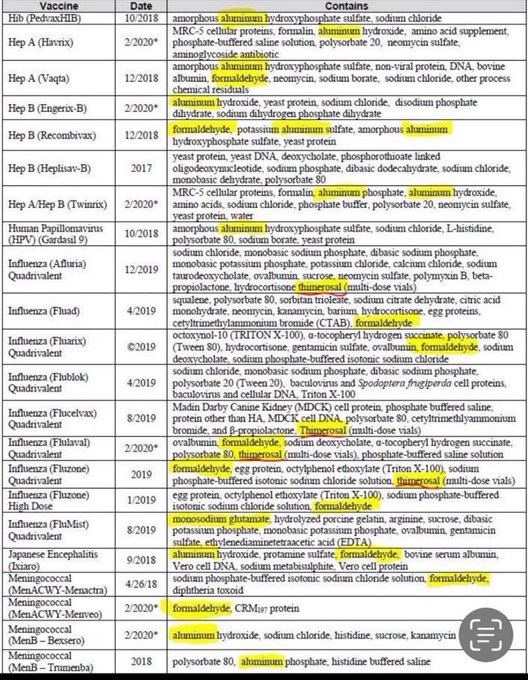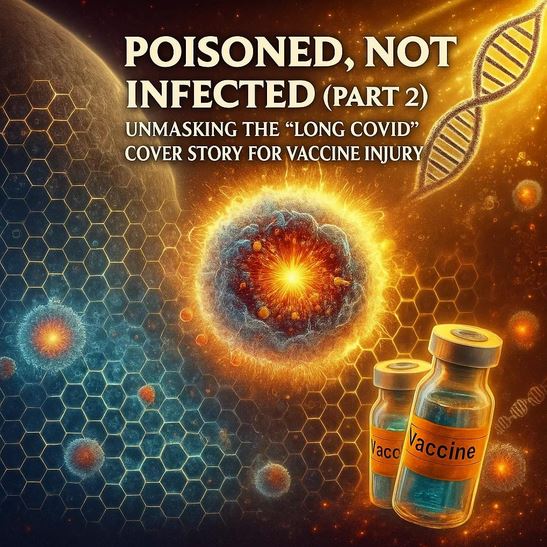
Human biodistribution study shows Pfizer mRNA penetrates fetal and reproductive tissues, persists long-term in the body, and presents clear evidence of shedding.
For years, the public was told a simple story: the mRNA “stays in the arm,” degrades within hours, never enters the bloodstream, never crosses the placenta, never reaches the reproductive system, and certainly cannot be shed or transferred to others. These claims were repeated endlessly by agencies, fact-checkers, news outlets, and medical institutions, despite the fact that no long-term human biodistribution studies had ever been performed.
A new peer-reviewed study published in Annals of Case Reports titled, Detection of Pfizer BioNTech Messenger RNA COVID-19 Vaccine in Human Blood, Placenta and Semen, ends that narrative.
Researchers from Bar-Ilan University and several Israeli medical centers used nested PCR combined with Sanger sequencing—a far more sensitive and specific method than the standard qPCR used in earlier studies—to test for Pfizer mRNA in human tissues from 34 participants, including 22 pregnant women, 4 male sperm donors (8 samples), and 8 additional adults.
Their findings are deeply worrisome: 88% of pregnant women vaccinated within the last 100 days showed detectable Pfizer mRNA in both blood and placental tissue. Among male sperm donors, 100% of those who produced sperm had vaccine mRNA in their sperm cells, and 50% had it detectable in seminal fluid—long after vaccination.
Even more concerning, Pfizer mRNA was detected in 50% of the unvaccinated women tested —two in both placenta and blood, and one in blood alone; a result that forces the scientific community to confront the reality of shedding, something officials categorically deny.
Most striking of all, mRNA was still present in 50% of individuals more than 200 days after injection.
https://www.thefocalpoints.com/p/breaking-study-pfizer-mrna-found





